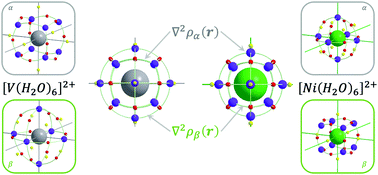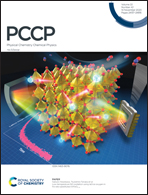From the Linnett–Gillespie model to the polarization of the spin valence shells of metals in complexes†
Abstract
In this paper, we present a novel approach to track the origin of the metal complex structure from the topology of the α and β spin densities as an extension of the Linnett–Gillespie model. Usually, the theories that explain the metal–ligand interactions consider the disposition and the relative energies of the empty or occupied set of d orbitals, ignoring the spin contribution explicitly. Our quantum topological approach considers the spatial distribution of the α and β spin valence shells, and the energy interaction between them. We used the properties of the atomic graph, a topological object that summarises the charge concentrations and depletions on the valence shell of an atom in a molecule, and the interacting quantum atoms (IQA) energy partition scheme. Unlike the Linnett–Gillespie model, which is based on electron–electron repulsion, our approach states that the ligands provoke a redistribution of the electron density to maximize the nuclear–electron interactions in each spin valence shell to bypass the concentration of electron–electron interactions, resulting in a polarization pattern which determines the position of the ligands.



 Please wait while we load your content...
Please wait while we load your content...